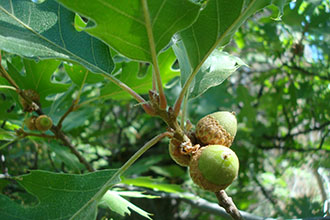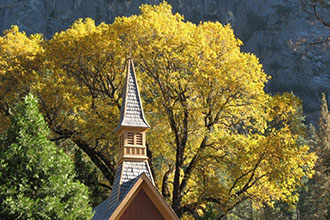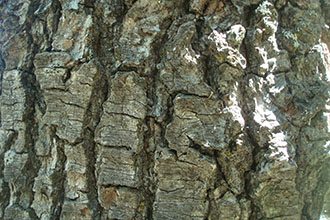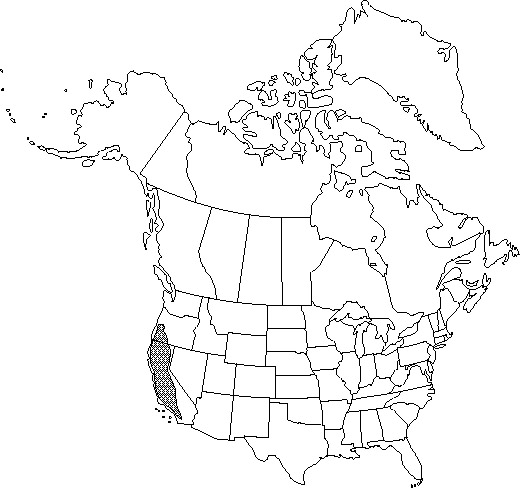Taxonomy: Kingdom - Plantae (plants). Subkingdom - Tracheobionta (vascular plants). Superdivision - Spermatophyta (seed plants). Division - Magnoliophyta (flowering plants). Class - Magnoliopsida (dicotyledons). Subclass - Hamamelididae. Order - Fagales. Family - Fagaceae (beech). Genus - Quercus L. (oak). Species - Quercus kelloggii Newberry (california black oak).
Ecology: California black oak is typically 9-25 m in height and 0.3-1.4 m DBH at maturity. Large trees may exceed 36 m in height and 2 m DBH. On open, fertile sites form is tall and straight, with a clean bole and a broad, rounded crown...California black oak has thin, smooth bark when young. Bark becomes moderately thick, deeply fissured, and platy with age. California black oak grows from one to several taproots that may penetrate to bedrock.
California black oak is the only western oak species in the red oak subgenus that is deciduous. The deeply lobed leaves are typically 10-20 cm long. Acorns are relatively large in this species, from 2.5-3 cm long and 1.5-1.8 cm wide.



